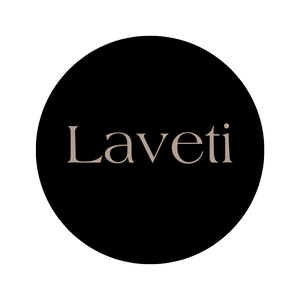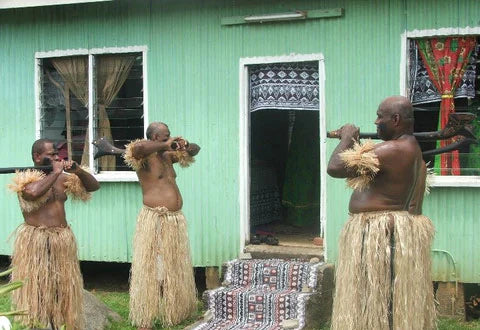TAUVU - Fijian Traditional Relationships
Source: Simione Sevudredre
Fiji is divided into 14 provinces today. These provinces were created during Fiji’s colonial history (from 1874 – 1970). Prior the redrawing of provincial boundaries, old Viti comprised many independent vanua or chiefdoms. There were various levels of hierarchy among the chiefdoms where one chief of a chiefdom may play a subservient role to another chiefdom somewhere else. Villages also of olden Viti were located in strategic locations like hill tops, mountain passes and river estuaries because of constant warring. The names of most clans and villages in Fiji today are in fact a crossing over of these old names to their current locations.
According to oral traditions, the earliest arrivals into Vitilevu first settled the coasts and over time gradually migrated into the mountains for strategic and security reasons. These early extended families over time grew larger and led to splinter groups leaving the parent group to resettle and relocate elsewhere. The reasons for these outward relocations are many ranging from resource scarcity, internal conflicts to outright exiling or banishment.
When these splinter groups finally settled, the memory of their origin was never forgotten. These oral stories of migration and histories were passed down generations. Splinter groups increased in size over time likewise that of the original parent group. The memory of being family once upon a time is what gave rise to the notion of today’s current traditional relationship between clans and chiefdoms that are separated geographically. This memory of being family once upon a time is known as TAUVU or VEITAUVUTAKI. The word TAUVU is an abbreviation of the word TAUYAVU which means sharing the same beginnings or origins.
To illustrate, I retell an old story about a princess of Nayau Island in the Lau group called Adi Keletu. The people of Nayau originally came from Verata, an old kingdom that once spanned most of eastern Vitilevu and Vanualevu. Adi Keletu was the daughter of the old king and queen of Nayau Island. She was said to be of stunning beauty, delicate form and long hair locks or tobe signifying her virginity. As was tradition Adi Keletu had her own retinue to serve her and she was expected to be refined and graceful in everything she did because this would bode well to the chiefdom she would eventually marry into.
One day as the princess was scraping pandanus leaves with her ladies in waiting, the king of Nayau said that the tide was out and for the ladies and princess to head out to fish. Adi Keletu tucked her itoci (shell for stripping pandanus) onto her ear and headed out with her net.
Because there was not much caught along the beach, it was thought for them to wade further out into the deep. It wasn’t long when a large fish got caught in their net. Such was its size that it scared all of them causing them to let go of the net and swim back to land. As she was swimming back Princess Keletu looked back and saw the huge shark hot on her trail. Upon reaching her, the shark swallowed her whole and headed back out into the deep.
Back on land the ladies recounted their ordeal to the Tui Nayau who forgave them realizing that what had happened was no fault of theirs. Tui Nayau directed the men to serach the beaches and the sea for the fish and Adi Keletu to no avail.
While in the belly of the shark Adi Keletu was still alive but felt stifled and needed fresh air. She was inside the fish for 10 days and needed to get out. She felt her hair had grown long and unkempt and it was then she felt her itoci still tucked behind her ear. Adi Keletu then used the sharp end of her itoci to slash the belly of the shark. The shark tossed and squirmed but the princess was not deterred for such was her desire to get out.
The shark had by then entered the mouth of the Rewa River on south eastern Vitilevu still tossing and squirming. It finally beached at a small creek called Cavura at a place called Navakǡ (stress on the last /a/). Adi Keletu’s action in the shark’s belly caused the shark to vomit her out and it died as a result.
Adi Keletu was very weak from starvation having just enough energy to crawl from the bank to the shade of a tree and immediately fell off to sleep. Unbeknown to Adi Keletu she had stumbled into the domain of a chiefdom called Bureonoco.
The next day a man from a nearby settlement headed out to the estuary to trap swamp lobsters. As he waded across, his eye caught the figure of Adi Keletu bathing herself. Such was her beauty that he was stunned and silent for moments. He thought it was an apparition and rubbed his eyes. Then fear began to envelop him realizing that it could be a female spirit entity he was looking at. It was then Adi Keletu turned to look and their eyes met. The man quietly muttered – “are you a spirit or human?”
“I am human, she replied. My name is Adi Keletu, princess of Nayau. I was out fishing at sea with my maidens when a huge shark swallowed me whole and I was inside its belly for ten days. It was when I began slashing inside the belly of the shark that caused it to vomit me out here.
“Stand up my lady, let me take your home”
“Where is your home?”
“It is close by here”.
When they reached home, the man made an herbal concoction for Adi Keletu to drink to vomit out toxins ingested while in the shark’s belly. She immediately felt her hunger pangs. The man nursed her back to health. The next day, he intended to go out fishing for their meal. In trying to light the fire, the rain from the previous night made igniting difficult. Smoke billowed out from the house and this was noticed by the rest of the villagers who grew suspicious. An elder quietly approached the house, entered and saw Adi Keletu.
“So this is what all the secrecy is about!”
The man in the house meekly agreed. The elder turned and headed straight to the chief’s abode. The Ratu chief dispatched four warriors to escort the princess to him. There were ooohs and aaahs when she approached for all present were enthralled by her beauty. The Ratu of the Noco chiefdom took Adi Keletu to be his wife, and they had many children and lived happily ever after.
Today, the people of Nayau and Noco remember this story and the founding of the family that was sired from it. They acknowledge this union as the beginning of a traditional relationship of family between the chiefdom of Nayau and the chiefdom of Noco. Because old Noco is part of the Rewa confederacy and Nayau is part of the Lau province, this relationship has been extended and inclusive of the people in today’s Rewa and Lau provinces because of inter marriage and internal migrations within Noco and Rewa and Nayau, Lakeba and most of Lau. When there is a chance meeting between people of these vanua or chiefdoms, though they may be initial strangers, they connect with each other by addressing each other as TAUVU, meaning sharing the same origins – family. As such there is no initial hesitation or restraint expected in this relationship. One treats the other as family – there is fondness, there may be banter, there may be stern talks, even reprimanding – all these are acceptable between the said people because it is received in the spirit of family. The memory of family and family is memory.
Fig.1 Map of Navakǡ in Noco Rewa (https://elevationmap.net/navaka-noco-rewa-fj-1005499479 )

Fig.2 Map of Nayau Island in Lau (https://elevationmap.net/nayau-lau-fj-1005499679 )



